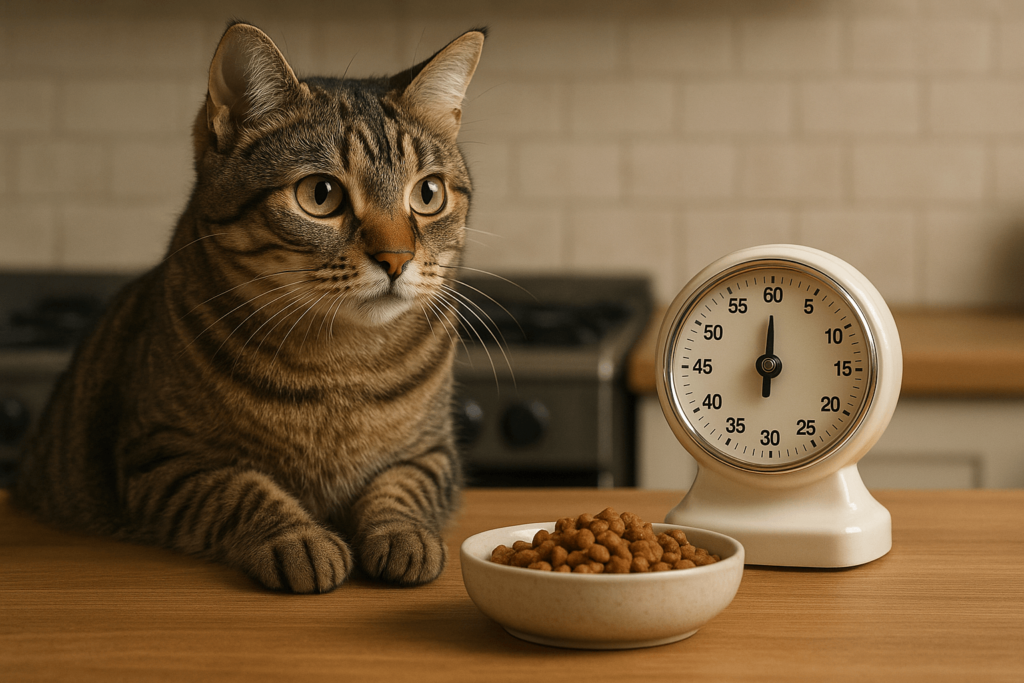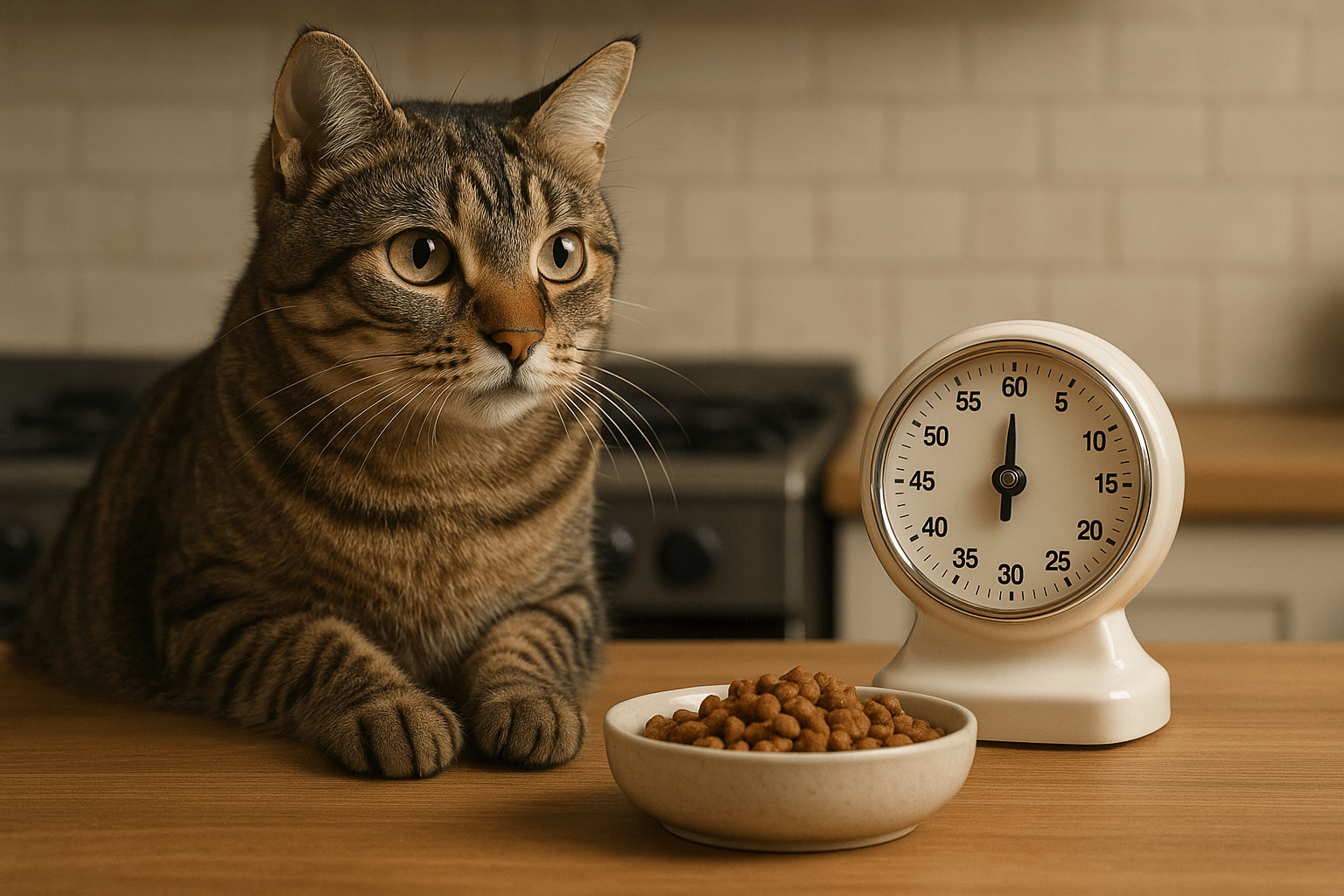Best Times to Feed a Cat
Feeding your cat at the right times is essential for their health, happiness, and overall well-being. Cats are creatures of habit, and establishing a consistent feeding routine can help regulate their digestion, energy levels, and behavior. But what are the best times to feed a cat? Should you follow a strict schedule, or is it better to let them graze throughout the day? Understanding your cat’s natural instincts, nutritional needs, and daily habits will guide you in creating a feeding plan that works for both of you. Let’s explore the science and practical tips behind optimal feeding times for your feline friend.
Understanding Your Cat’s Natural Feeding Patterns
Cats are naturally crepuscular animals, meaning they are most active during dawn and dusk. This behavior influences their eating habits and should be considered when planning meal times.
Dawn Activity Spikes:
Cats often wake up hungry early in the morning, aligning with their instinct to hunt small prey at sunrise.Dusk Feeding Instincts:
Evening is another peak time for activity and hunger, as cats prepare for nighttime hunting in the wild.Small, Frequent Meals:
Unlike humans, cats prefer smaller meals spread throughout the day rather than one or two large portions.Avoid Late-Night Feeding:
Feeding too close to bedtime can disrupt your cat’s sleep cycle and lead to restless behavior.Consistency Is Key:
Sticking to regular feeding times helps regulate your cat’s metabolism and reduces stress.
By aligning your feeding schedule with your cat’s natural rhythms, you can support their physical and mental health more effectively.

Benefits of Scheduled Feeding Times
Establishing set meal times offers numerous advantages for both you and your cat. A structured routine ensures proper nutrition while minimizing potential issues.
Improved Digestion:
Regular feeding times allow your cat’s digestive system to function optimally, reducing the risk of gastrointestinal problems.Weight Management:
Scheduled meals help prevent overeating, which is crucial for maintaining a healthy weight and avoiding obesity-related conditions.Behavioral Stability:
Cats thrive on predictability, and knowing when to expect food reduces anxiety and unwanted behaviors like begging or aggression.Easier Monitoring:
A fixed schedule makes it easier to track how much your cat is eating, helping you spot changes in appetite that could indicate health issues.Stronger Bonding Opportunities:
Meal times provide opportunities to interact with your cat, reinforcing your bond and ensuring they associate you with positive experiences.
A consistent feeding routine benefits not only your cat’s health but also your relationship with them.
Check this guide 👉Understanding Cat Food Calories: Best 7 Expert Tips!
Check this guide 👉How Long Does Cat Food Last in the Fridge? Best 7 Tips!
Check this guide 👉Understanding Cat Food Macros: Best 7 Expert Tips!
Advantages of Scheduled Feeding | Disadvantages of Free Feeding |
|---|---|
Regulates metabolism | Encourages overeating |
Prevents obesity | Leads to stale or wasted food |
Reduces behavioral issues | Increases risk of spoilage |
Allows better portion control | Difficult to monitor intake |
Strengthens owner-pet bonding | May disrupt natural feeding cues |
Tips for Adjusting Your Cat’s Feeding Schedule
Transitioning to a new feeding schedule requires patience and careful planning. Here are some practical tips to make the adjustment smoother for your cat.
Gradual Changes Are Best:
Slowly shift meal times by adjusting them in 15-30 minute increments each day until you reach the desired schedule.Use High-Quality Food:
Providing nutrient-rich food ensures your cat feels satisfied between meals, reducing the urge to beg or snack excessively.Create a Calm Environment:
Feed your cat in a quiet, low-distraction area to encourage relaxation and proper digestion.Incorporate Play Before Meals:
Engaging your cat in play mimics their natural hunting behavior and stimulates appetite before mealtime.Monitor Their Response:
Observe your cat’s energy levels, weight, and overall demeanor to ensure the new schedule suits their needs.
With these strategies, you can successfully adapt your cat’s feeding routine without causing unnecessary stress.
How Age Affects Feeding Times
A cat’s age plays a significant role in determining the best feeding times and frequency. Tailoring your approach to your cat’s life stage ensures their unique needs are met.
Kittens Require Frequent Meals:
Kittens have high energy demands and should be fed 3-4 small meals daily to support growth and development.Adult Cats Thrive on Routine:
Most adult cats do well with two meals per day, spaced evenly apart, to maintain stable energy levels.Senior Cats May Need Adjustments:
Older cats may benefit from more frequent, smaller meals to accommodate slower digestion and reduced activity levels.Pregnant or Nursing Cats Need Extra Care:
These cats require additional calories and nutrients, often necessitating multiple daily feedings.Medical Conditions Alter Needs:
Cats with health issues like diabetes may need specialized schedules designed in consultation with a veterinarian.
Adapting feeding times based on age ensures your cat receives the appropriate nourishment at every stage of life.
Signs Your Cat Is Hungry
Recognizing signs of hunger in your cat can help you determine whether adjustments to their feeding schedule are needed. These cues indicate when your cat might need more food or simply crave attention.
Persistent Meowing or Vocalization:
Cats often communicate their hunger through loud meows or persistent calls near their food bowl.Following You Around the House:
If your cat shadows you closely, especially around typical meal times, they may be signaling hunger.Sniffing or Pawing at Their Bowl:
Cats may investigate empty bowls or paw at them when they’re anticipating food.Increased Affection or Clinginess:
Some cats seek extra attention as a way to indirectly ask for food.Restlessness or Pacing:
Unusual restlessness or pacing can indicate discomfort due to hunger or an irregular feeding schedule.
Understanding these signs allows you to respond appropriately and refine your cat’s feeding routine.
Foods to Avoid Feeding Your Cat
While it’s tempting to share human food with your cat, certain items can be harmful or even toxic. Knowing what to avoid keeps your cat safe and healthy.
Chocolate and Caffeinated Drinks:
These contain theobromine and caffeine, which are toxic to cats and can cause serious health issues.Onions, Garlic, and Chives:
These ingredients can damage a cat’s red blood cells, leading to anemia.Dairy Products Like Milk:
Despite popular belief, many cats are lactose intolerant and may experience digestive upset from dairy.Raw Meat or Fish:
Raw foods carry bacteria and parasites that pose risks to your cat’s health.Bones from Cooked Meat:
Cooked bones splinter easily and can cause choking or internal injuries.
Avoiding these foods ensures your cat enjoys a safe and nutritious diet tailored to their needs.
How to Handle Picky Eaters
Some cats are notoriously picky eaters, making meal times frustrating for owners. Addressing this behavior requires patience and creative solutions.
Introduce New Foods Gradually:
Mix small amounts of new food with familiar flavors to ease the transition and reduce resistance.Warm Up Food Slightly:
Heating canned food slightly enhances its aroma, making it more appealing to finicky cats.Stick to a Set Routine:
Consistent feeding times and locations help reassure picky eaters and encourage them to eat regularly.Limit Treat Availability:
Offering too many treats can reduce interest in regular meals. Reserve treats for training or special occasions.Consult a Veterinarian:
Persistent refusal to eat could indicate underlying health problems, so seek professional advice if necessary.
With these strategies, you can encourage even the fussiest cats to enjoy their meals consistently.
Frequently Asked Questions About Feeding Cats
How many times a day should I feed my cat?
Most adult cats thrive on two meals per day, while kittens and seniors may need three or more smaller meals.
Can I leave dry food out all day?
While convenient, free feeding can lead to overeating and obesity. Portioned meals are generally recommended.
What if my cat wakes me up for food?
Establishing a consistent feeding routine and ignoring late-night demands can help break this habit over time.
Is wet or dry food better?
Both types have pros and cons; combining them can provide balanced nutrition and hydration.
Should I feed my cat treats?
Treats are fine in moderation but shouldn’t exceed 10% of your cat’s daily caloric intake to avoid unbalancing their diet.
Creating a Balanced Feeding Routine for Your Cat
Finding the best times to feed your cat involves understanding their natural instincts, nutritional needs, and individual preferences. By establishing a consistent schedule, providing high-quality food, and adapting to their changing requirements over time, you can ensure your feline companion stays healthy and content. Remember, every cat is unique, so don’t hesitate to consult your veterinarian for personalized advice. With patience and care, you can build a feeding routine that supports your cat’s well-being and strengthens the bond you share.
Canned Pumpkin for Cat Diarrhea: Best 7 Expert Tips! Natural remedy to firm stools, soothe upset bellies, and support gut health safely.
Can a Cat Give You Scabies? Best 7 Expert Tips! Discover the truth about feline mites, human skin risks, and how to protect yourself—without panic.
Cat Flea vs Human Flea: Best 7 Expert Tips! Discover the truth about bites, species, and how to eliminate infestations for good.
Weird Cat Behaviors: Best 7 Expert Tips! Discover why cats do strange things—and how to understand, not punish, their instincts for a happier home.





